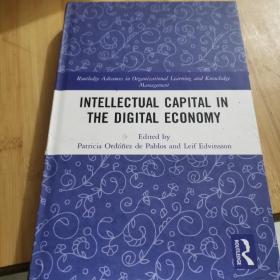
Capital in the Twenty-First Century
¥ 60 2.1折 ¥ 284.4 九品
仅1件
作者Thomas Piketty(托马斯·皮克迪) 著;Arthur Goldhammer 译
出版社Belknap Press
出版时间2014-03
版次1
装帧精装
货号26-1
上书时间2024-09-21
- 店主推荐
- 最新上架
商品详情
- 品相描述:九品
图书标准信息
- 作者 Thomas Piketty(托马斯·皮克迪) 著;Arthur Goldhammer 译
- 出版社 Belknap Press
- 出版时间 2014-03
- 版次 1
- ISBN 9780674430006
- 定价 284.40元
- 装帧 精装
- 开本 其他
- 纸张 胶版纸
- 页数 696页
- 正文语种 英语
- 原版书名 Le capital au XXIe siècle
- 【内容简介】
-
What are the grand dynamics that drive the accumulation and distribution of capital? Questions about the long-term evolution of inequality, the concentration of wealth, and the prospects for economic growth lie at the heart of political economy. But satisfactory answers have been hard to find for lack of adequate data and clear guiding theories.
In Capital in the Twenty-First Century, Thomas Piketty analyzes a unique collection of data from twenty countries, ranging as far back as the eighteenth century, to uncover key economic and social patterns. His findings will transform debate and set the agenda for the next generation of thought about wealth and inequality.
Piketty shows that modern economic growth and the diffusion of knowledge have allowed us to avoid inequalities on the apocalyptic scale predicted by Karl Marx. But we have not modified the deep structures of capital and inequality as much as we thought in the optimistic decades following World War II. The main driver of inequality--the tendency of returns on capital to exceed the rate of economic growth--today threatens to generate extreme inequalities that stir discontent and undermine democratic values. But economic trends are not acts of God. Political action has curbed dangerous inequalities in the past, Piketty says, and may do so again.
A work of extraordinary ambition, originality, and rigor, Capital in the Twenty-First Century reorients our understanding of economic history and confronts us with sobering lessons for today.
决定财富积累和分配的因素有哪些?长期来看,我们的贫富差距是扩大了还是缩小了?财富是否越来越集中到少数人手中?未来的经济和社会将走向何方?
苦于没有完备的数据和指导理论,对于这些关乎国计民生的焦点问题,我们一直找不到满意的答案。而法国经济学家托马斯??皮凯蒂以其开创性的工作,填补了这项空白。在《21世纪资本论》中,皮凯蒂对过去3个世纪以来欧美国家财富收入的丰富历史数据进行了详尽探究,结果证明:“二战”以来,各个国家的不平等现象已经扩大,并且很快将变得更加严重;现在一个人财富的多寡不仅由劳动所得决定,还由继承的财富决定,因而出身要比后天的努力和才能更重要。
由于现代经济增长和知识技能的扩散,当今社会并没有像马克思预言的那样出现极端不平等。尽管如此,但我们并没有改变财富和不平等的深层结构。当前,资本收益率持续高于经济增长率的趋势,将不断加剧收入不平等,有可能威胁到现代民主的价值观。皮凯蒂表明,我们可以通过政治制度和手段——在全球范围内实行累进资本税——来抑制贫富分化和收入不平等。
可以有把握地说,《21世纪资本论》将成为本年度,甚或是这个10年最重要的一本经济学著作……本书的真正新颖之处在于,它摧毁了保守派最为珍视的一些错误信条。保守派坚持认为,我们生活在一个靠才能就能成功的时代,富人的巨额财富都是赚来的,也都是应得的。但皮凯蒂阐明,富人的大部分收入并非来源于他们的工作,而是来自他们已拥有的财产。我们正在倒退回“承袭制资本主义”的年代。
——保罗·克鲁格曼 - 【作者简介】
-
Thomas Piketty is Professor at the Paris School of Economics.
Arthur Goldhammer received the French–American Translation Prize in 1990 for his translation of A Critical Dictionary of the French Revolution.
托马斯·皮凯蒂(ThomasPiketty),法国著名经济学家,巴黎经济学院教授,法国社会科学高等研究院研究主任,主要研究财富与收入不平等。
1971年生于法国上塞纳省,18岁进入法国高师,学习数学和经济学。22岁以一篇关于财富重新分配的论文,获得博士学位。
1993~1995年,在麻省理工学院经济学院任副教授。
1995年,加入法国国家科学研究中心,担任研究员。
2000年,在法国社会科学高等研究院担任研究主任。
2006年,联合创立了巴黎经济学院,并担任第2任院长。后在法国总统竞选中,担任社会党候选人塞格琳·罗雅尔(SégolèneRoyal)的经济学顾问。
2007年至今,在巴黎经济学院执教。
2013年,荣获两年一次的Yrj Jahnsson奖,该奖项颁发给45岁以下、对经济学研究作出突出贡献的欧洲经济学家。
- 【目录】
-
Acknowledgments
Introduction
I. Income and Capital
1. Income and Output
2. Growth: Illusions and Realities
II. The Dynamics of the Capital/Income Ratio
3. The Metamorphoses of Capital
4. From Old Europe to the New World
5. The Capital/Income Ratio over the Long Run
6. The Capital–Labor Split in the Twenty-First Century
III. The Structure of Inequality
7. Inequality and Concentration: Preliminary Bearings
8. Two Worlds
9. Inequality of Labor Income
10. Inequality of Capital Ownership
11. Merit and Inheritance in the Long Run
12. Global Inequality of Wealth in the Twenty-First Century
IV. Regulating Capital in the Twenty-First Century
13. A Social State for the Twenty-First Century
14. Rethinking the Progressive Income Tax
15. A Global Tax on Capital
16. The Question of the Public Debt
Conclusion
Notes
Contents in Detail
List of Tables and Illustrations
相关推荐
-

Knowledge CAPITAL in the Digital Society
八五品北京
¥ 120.00
-

Intellectual Capital in the Digital Economy
九品郑州
¥ 558.00
-

Knowledge CAPITAL in the Digital Society
八五品北京
¥ 80.00
-

STUDIES IN THE AUSTRALIAN CAPITAL MARKET
八品徐州
¥ 60.00
-

Capital in the Twenty-First Century
九品上海
¥ 95.00
-

Capital in the Twenty-First Century
八五品宜春
¥ 180.00
-

Capital in the Twenty-First Century
九品北京
¥ 176.00
-

Capital in the Twenty-First Century
八五品衡水
¥ 90.00
-

Capital in the Twenty-First Century
九品北京
¥ 237.00
-

Capital in the Twenty-First Century
九品石家庄
¥ 90.00
— 没有更多了 —























以下为对购买帮助不大的评价